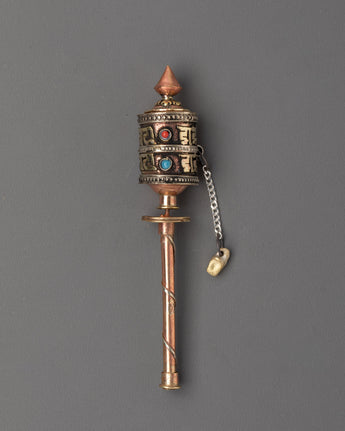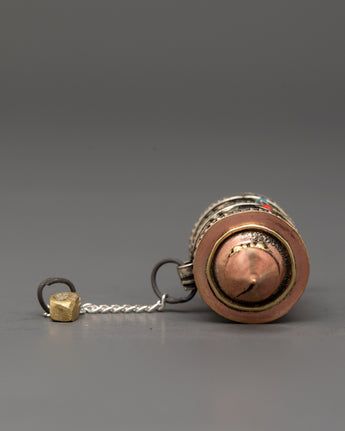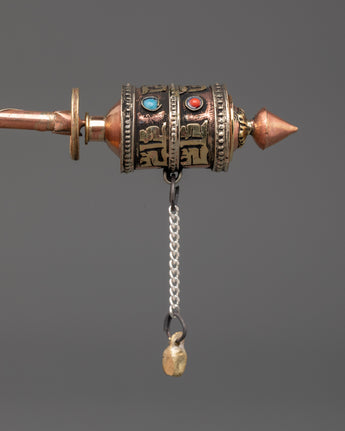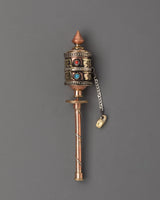

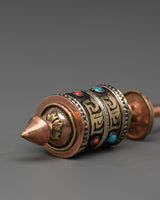
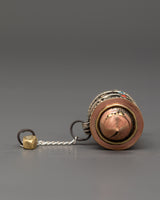
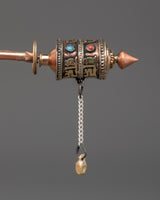
Handmade Buddhist Spinning Mantra Wheel with Copper and Brass Body

100% AUTHENTIC

HANDMADE

FREE SHIPPING
Sacred Buddhist Spinning Mantra Wheel | For Spiritual Healing, Meditation, and Space Decor
--------------------------------------------------------
Size: 12cm (Height) x 2.5cm (Width)
Weight: 0.016kg
Materials: Copper Body, Brass Body, Turquoise (Artificial Stones)
--------------------------------------------------------
About our Prayer Wheel
Improve your meditation and ritual practice with this Buddhist Spinning Mantra Wheel, a sacred prayer tool rooted in centuries of Tibetan tradition. Standing 12cm tall and weighing only 0.016kg, this prayer wheel is crafted from a magnificent blend of copper and brass, adorned with artificial turquoise stones that enhance its spiritual and visual appeal. The Spinning Mantra Wheel is inscribed with sacred mantras and is intended to generate blessings and merit when revolved intentionally.
The prayer wheel is skillfully created, blending symbolic materials and precise detailing to enhance our spiritual journey. The copper and brass body provides symbolic purity, while the turquoise inlays give color and a nod to Tibetan design. This lightweight yet profound artifact, ideal for use while chanting, meditation, or as an altar centerpiece, adds spiritual harmony, mindfulness, and blessings to any setting.
Introduction to Prayer Wheel
A prayer wheel is a cylindrical device on a spindle, used in Tibetan Buddhism. It is typically inscribed with the mantra "Om Mani Padme Hum" and rotated by hand as a form of spiritual practice and to accumulate merit. Spinning the wheel is believed to have the same spiritual benefits as reciting the mantra verbally. The use of prayer wheels is widespread in Tibetan Buddhism and has spread to other cultures.
How does the Buddhist Prayer Wheel benefit us?
The benefits associated with rotating the wheel are numerous. It promotes knowledge, compassion, and bodhicitta in the practitioner and enhances siddhis (spiritual powers, such as clairvoyance and precognition). The practitioner can repeat the mantra as often as possible while the wheel is rolling, maintaining a calm, meditative attitude. A Tibetan Buddhist tradition holds that after a practice session, one should dedicate any acquired merits to the benefit of all sentient beings. Then three times Om Ah Hum. This is usually among Tibetans after finishing any Buddhist practice, including the prayer wheel exercise.
How do you set up your own Buddhist Shrine?
• Find a clean, quiet, and uncluttered spot
• Set up an altar table and cover it with an altar cloth that calls to you
• Place your sacred item at the center


